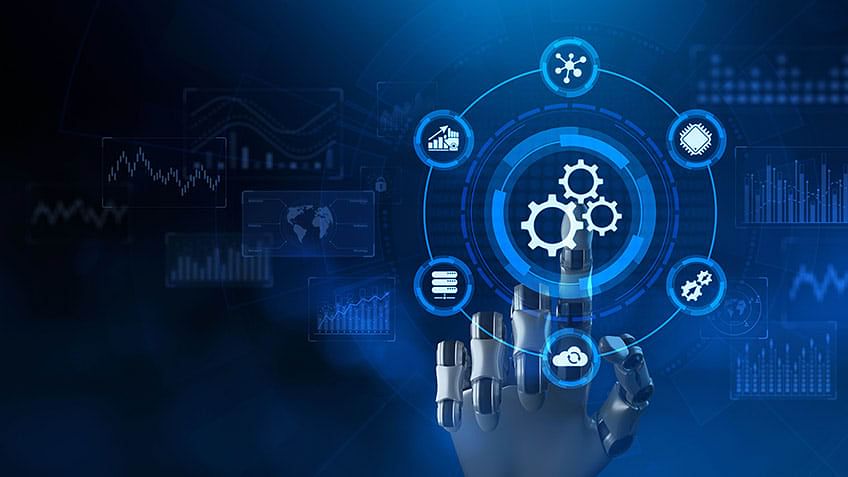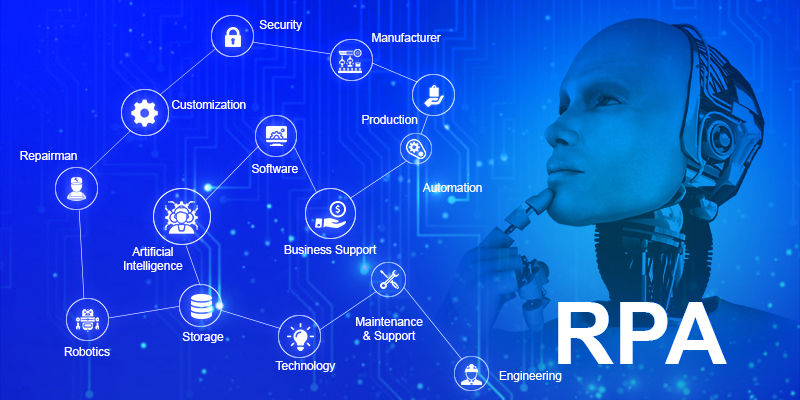In today’s fast-paced and highly competitive business landscape, organizations are constantly seeking ways to optimize their operations and improve efficiency. One groundbreaking technology that has emerged as a game-changer in this regard is Robotic Process Automation (RPA). RPA has revolutionized the way businesses handle repetitive, rule-based tasks by automating them through the use of software robots or “bots.” This article delves into the world of RPA, exploring its benefits, applications, and the future of this transformative technology.
What is Robotic Process Automation (RPA)?
Robotic Process Automation (RPA) is an advanced technology that leverages software robots or bots to automate repetitive, rule-based tasks. These bots are programmed to mimic human actions and interact with various software applications and systems, performing tasks that were traditionally carried out by humans. RPA enables businesses to automate manual processes, increase productivity, reduce errors, and free up human resources for more value-added activities.
Benefits of RPA in Business Operations
Increased Efficiency: RPA eliminates the need for manual intervention in repetitive tasks, leading to improved operational efficiency. Bots can work tirelessly 24/7 without fatigue or errors, completing tasks at a significantly faster pace than humans.
Cost Savings: By automating routine processes, businesses can reduce labor costs and redeploy resources to higher-value activities. RPA also minimizes the risk of errors and associated costs, such as rework or penalties due to compliance breaches.

Enhanced Accuracy and Compliance: Human errors are unavoidable in monotonous tasks, but RPA ensures consistent accuracy and compliance by following predefined rules and regulations. This helps organizations maintain high-quality standards and avoid costly mistakes.
Scalability and Flexibility: RPA allows businesses to scale their operations rapidly without the need for extensive infrastructure or recruitment. Bots can handle increased workloads seamlessly and adjust to changing business requirements, offering scalability and flexibility.
Improved Customer Experience: RPA enables faster response times and streamlined processes, resulting in enhanced customer satisfaction. Bots can retrieve customer information, process inquiries, and perform data entry tasks with greater efficiency, providing a seamless experience.
Applications of RPA
Data Entry and Processing: RPA can automate data entry tasks, extracting information from various sources, validating and processing it, and updating relevant systems. This significantly reduces manual effort and improves data accuracy.
Invoice and Purchase Order Processing: RPA bots can extract data from invoices, cross-reference it with purchase orders and receipts, and update accounting systems automatically. This accelerates the invoicing process and minimizes discrepancies.

Customer Service and Support: RPA can handle routine customer inquiries by accessing databases, retrieving information, and generating responses. Bots can also assist in call routing, ticketing, and resolution tracking, optimizing customer service operations.
Financial and Regulatory Reporting: RPA enables efficient data collection and consolidation for financial and regulatory reporting. Bots can extract data from multiple systems, perform calculations, and generate accurate reports within shorter timeframes.
HR and Employee Onboarding: RPA streamlines HR processes such as employee onboarding, offboarding, and data management. Bots can automate the creation of employee profiles, verify credentials, and update relevant systems, reducing administrative burden.
The Future of RPA
As organizations continue to embrace digital transformation, the future of RPA looks promising. Here are some key trends that will shape the evolution of RPA:
Intelligent Automation: RPA will integrate with emerging technologies like artificial intelligence (AI) and machine learning (ML) to enable cognitive capabilities. Intelligent automation will enhance bots’ ability to understand unstructured data, make decisions, and handle complex tasks.

Hyperautomation: Hyperautomation refers to the end-to-end automation of processes, combining RPA with other automation technologies, such as process mining and workflow automation. This holistic approach will optimize entire business processes, driving greater efficiency and productivity.
Collaboration between Humans and Bots: Rather than replacing human workers, RPA will augment their capabilities. Humans will collaborate with bots, focusing on strategic and creative tasks, while bots handle repetitive and mundane activities, leading to a more harmonious work environment.
Advanced Analytics and Insights: RPA will generate valuable data and insights about process efficiency, performance, and potential bottlenecks. Analyzing this data will help businesses identify areas for further improvement and make data-driven decisions.
In conclusion, Robotic Process Automation (RPA) has emerged as a transformative technology, streamlining business operations and revolutionizing the way organizations handle repetitive tasks. Its numerous benefits, such as increased efficiency, cost savings, and improved accuracy, have made it an integral part of digital transformation strategies. As RPA continues to evolve and integrate with other technologies, businesses can expect even greater automation, enhanced collaboration between humans and bots, and actionable insights for continuous process optimization. Embracing RPA will enable organizations to stay competitive, unlock new efficiencies, and focus on strategic initiatives that drive growth in the ever-evolving business landscape.

